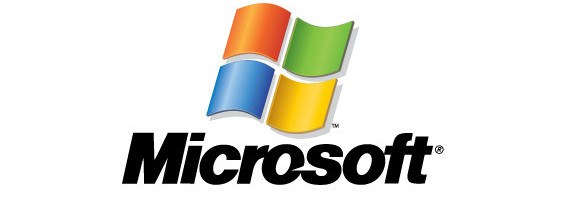Microsoft: Took the Lead Early

Microsoft is a company that achieved their dominance within the PC market by capitalizing on direct network effects.
Compatibility
Arguably the most obvious way in which Microsoft leveraged success through direct network effects is due to the very nature of software and the need for compatibility. In order for users to share files and transfer between computers, they are better off when those files are stored in the same format. For businesses, procurement is incentivized for standard operating systems that are compatible within office environments. Because of this compatibility, in 2013, Windows held 80% market share despite other arguably better or cheaper operating systems. As for files, Microsoft Word is the clear leader in word processing, despite free alternatives such as WordPad and GoogleDocs.
Positive Feedback and Demand Side Economies of Scale
In the late 80s and early 90s, as Microsoft and the Personal Computer became more popular, their strength only aided them in getting stronger. Additional users moving to the personal computer chose Microsoft because they wanted to be a part of the same network as the individuals they needed to share files with. As Microsoft gained scale, the power of positive feedback pushed them further. People were afraid that the critical mass of the Apple network was diminishing (negative feedback) and Microsoft was gaining positively, which only reinforced the already rising power of the Personal Computer and Microsoft. By achieving demand-side economies of scale Microsoft truly launched.
Coercing Sales of Complementary Products as a Bundle (Resulting in Antitrust Violations)
Another success factor in achieving scale came at the cost of antitrust lawsuits. In the 1990s, Microsoft required that when a PC manufacturer purchased a Microsoft product for installation on the PC, the manufacturer also had to buy an MS-DOS license even if a different operating system was to be installed, therefore greatly increasing the scale of the MS-DOS network because manufacturers did not want to have to pay for installation of two operating systems-thus causing them to drop the alternative operating system in favor of MS-DOS.
Low Switching Costs for Converters
Word was not always the leading word processor over WordPerfect. In order to overcome switching costs for new users who may have used WordPerfect in the past, Microsoft created special instructions for WordPerfect users and made it very easy to convert WordPerfect files into Word format. Interestingly however, once most users were on Word, they did not allow for two-way compatibility within Word versions. For example, when Microsoft introduced Office 97, they made the program one-way compatible. While users with 97 could open files from earlier versions, users with earlier versions could not open Word 97 files without upgrading.
The Future
Today, as other companies such as Google are starting to offer solutions to Office, the question arises as to whether Microsoft can hold onto their market share. While Microsoft is still the market giant with Office, more users have started to migrate to other companies that have done a better job responding to trends in mobile and tablets, where Microsoft software is noticeably absent from the iPad, Kindle and Galaxy.
https://en.wikipedia.org/wiki/Microsoft_litigation
http://www.investopedia.com/ask/answers/08/microsoft-antitrust.asp
Carl Shapiro, Hal Varian. Information Rules: A Strategic Guide to the Network Economy, Chapter 7.
http://www.forbes.com/sites/quickerbettertech/2013/06/03/5-shocking-but-not-surprising-things-about-microsoft/
http://www-siepr.stanford.edu/papers/pdf/00-51.pdf



It is worth noting that Microsoft has changed quite a bit. I think I have been able to change DOCX files to DOC, or at least I feel like that. Also, you can edit Word files in Google Docs. Microsoft had to change its business model in response to changing markets quite a bit, but what it did in the 1990s, it worked.
One question: did the “pay for MS DOS” thing stick around during the Windows era?
Also: can these network effects ever be dented? While iOS and Android have taken over the mobile world and QNX is still the big name in cars and other large “computers,” Windows seems as strong as ever. Apple is doing better than before, but it is still a ways behind. Linux may never get there. Maybe Chrome OS could conquer the lower segments? But even that is dependent on an Internet-rich environment, as opposed to one where you need to find a Wi-Fi hotspot or an ethernet cable. Are we just stuck using Windows products because all of our programs are on it?